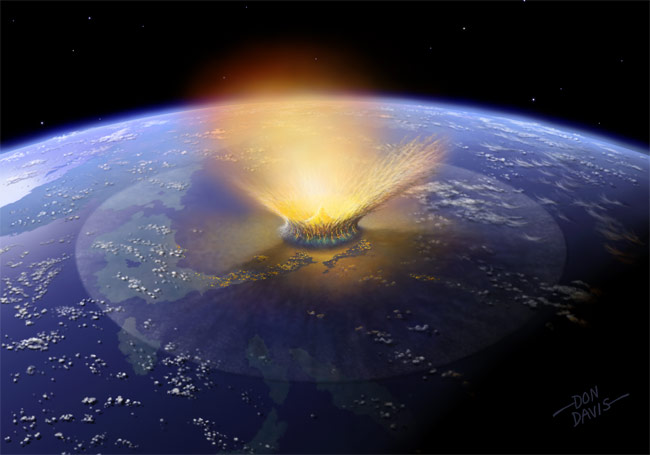66-Foot Waves Hit New York in Ancient Asteroid Splashdown

A cosmic impact two millennia ago may have sent tsunamis deluging what is now the Big Apple, scientists suggest.
Many of the giant sea waves known as tsunamis are caused by underwater earthquakes and volcanoes — for example, the devastating 2004 Indian Ocean tsunami was triggered by a quake off the northwestern coast of Sumatra. Still, the causes of nearly 10 percent of all tsunamis nowadays remain uncertain.
Cosmic impacts have been known to cause tsunamis in the past. For instance, scientists have found evidence that the Chicxulub impact in Mexico, which may have ended the age of dinosaurs, triggered gigantic waves.
Now researchers have evidence suggesting that an asteroid roughly 200 yards (183 meters) wide crashed off the coast of New Jersey and sent tsunamis surging toward what is now New York City some 2,300 years ago. [Video – Recreating an Ancient Tsunami]
"Our models suggest the tsunamis were up to 20 meters (66 feet) high when they entered the Hudson River," said researcher Dallas Abbott, a geologist at Columbia University's Lamont-Doherty Earth Observatory in New York.
New York City lies at the mouth of the Hudson. When the scientists drilled out tubes of sediment from the New York and New Jersey area, they discovered layers of unusual debris that, they suggest, were laid down by tsunamis.
"We have layers up to maybe 30 centimeters (11.8 inches) thick," Abbott said. "They get thinner upriver, where they're more like 6 centimeters (2.3 inches) thick."
Get the world’s most fascinating discoveries delivered straight to your inbox.
Within these potential tsunami layers is evidence of a cosmic impact, including shocked minerals and microscopic carbon beads loaded with "nano-diamonds," which are "all things only impacts can do," Abbott said. One candidate for the crater that was produced by this impact, she said, lies in the undersea Carteret Canyon, located roughly 90 miles (150 km) off the coast of New Jersey.
Other scientists have raised alternate explanations for these layers. For instance, volcanic eruptions or gigantic landslides on the other side of the Atlantic might have caused the giant waves. Or these anomalous layers of sediment that Abbott and her colleagues are investigating may not have been caused by tsunamis at all — hurricanes can generate huge pulses of water known as storm surges, whose effects on sediment could resemble those of tsunamis.
"Of course, that doesn't explain the evidence of impact that we've found," Abbott said.
For a cosmic impact, one smoking gun would be a specific form of deformed rock known as shocked quartz. The rock is generated by the intense heat and pressure of a collision with an extraterrestrial object. "But if there was an oceanic impact, the oceanic crust doesn't really have quartz to shock," Abbott said.
It there were tsunamis, it remains unclear if ancient Native Americans witnessed them.
"One possible reason why Indian tribes only moved into the area relatively recently is that the people who were once there were all wiped out," Abbott said. "If you look at the predicted wave heights, there would have been few places to hide."
Abbott and her colleagues plan to detail their most recent findings Nov. 3 in Denver, at the annual meeting of the Geological Society of America.



